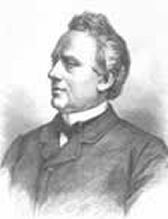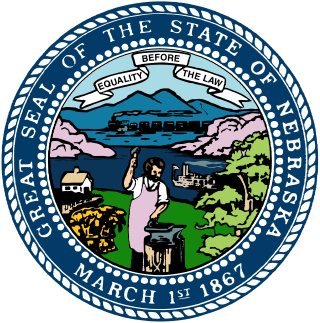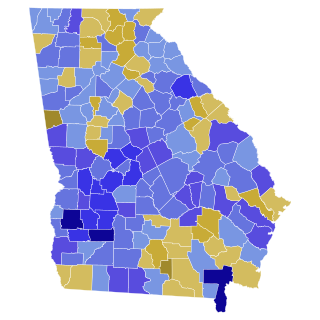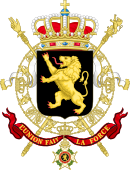The 1924 Dundee by-election was a by-election held on 22 December 1924 for the British House of Commons constituency of Dundee, in Scotland. It was won by the Labour Party candidate, Thomas Johnston.

The 1868–69 United States Senate elections were held on various dates in various states. As these U.S. Senate elections were prior to the ratification of the Seventeenth Amendment in 1913, senators were chosen by state legislatures. Senators were elected over a wide range of time throughout 1868 and 1869, and a seat may have been filled months late or remained vacant due to legislative deadlock. In these elections, terms were up for the senators in Class 1.

The 1892–93 United States Senate elections were held on various dates in various states, coinciding with former Democratic President Grover Cleveland's return to power. As these U.S. Senate elections were prior to the ratification of the Seventeenth Amendment in 1913, senators were chosen by state legislatures. Senators were elected over a wide range of time throughout 1892 and 1893, and a seat may have been filled months late or remained vacant due to legislative deadlock. In these elections, terms were up for the senators in Class 1.

The 1808 United States House of Representatives elections in New York were held from April 26 to 28, 1808, to elect 17 U.S. Representatives to represent the State of New York in the United States House of Representatives of the 11th United States Congress. At the same time, a vacancy was filled in the 10th United States Congress.

The 1810 United States House of Representatives elections in New York were held from April 24 to 26, 1810, to elect 17 U.S. Representatives to represent the State of New York in the United States House of Representatives of the 12th United States Congress. At the same time, a vacancy was filled in the 11th United States Congress.

Partial general elections were held in Belgium on 8 June 1852. In the elections for the Chamber of Representatives the result was a victory for the Liberal Party, who won 57 of the 108 seats. Voter turnout was 69.2%, although only 42,053 people were eligible to vote.

Partial general elections were held in Belgium on 10 June 1890. In the elections for the Chamber of Representatives the result was a victory for the Catholic Party, which won 94 of the 138 seats.

Partial general elections were held in Belgium on 14 June 1859. The result was a victory for the Liberal Party, which won 69 of the 116 seats in the Chamber of Representatives and 31 of the 58 seats in the Senate. Voter turnout was 55.9%, although only 49,672 people were eligible to vote.

Partial general elections were held in Belgium on 13 June 1882. The result was a victory for the Liberal Party, which won 79 of the 138 seats in the Chamber of Representatives and 37 of the 69 seats in the Senate. Voter turnout was 75.1%, although only 55,517 people were eligible to vote.

Legislative elections were held in Belgium in June and July 1884, for partial Chamber and full Senate elections respectively. Voter turnout was 79.1% in the Chamber of Representatives elections, although only 69,276 people were eligible to vote.

Partial general elections were held in Belgium on 12 June 1888. The result was a victory for the Catholic Party, which won 98 of the 138 seats in the Chamber of Representatives and 47 of the 69 seats in the Senate.
Three referendums were held in Switzerland during 1900. The first was held on 20 May on a federal law on health, accident and military insurance, and was rejected by 69.8% of voters. The second and third were held on 4 November on introducing proportional representation for National Council elections and the direct election and increase in members of the Federal Council. Both were rejected by a majority of voters and cantons.

The 1940 United States presidential election in Massachusetts took place on November 5, 1940, as part of the 1940 United States presidential election, held throughout all contemporary 48 states. Voters chose 17 representatives, or electors to the Electoral College, who voted for president and vice president.

The 1952 United States Senate election in Nebraska took place on November 2, 1952. The incumbent Republican Senator, Hugh A. Butler, was re-elected to a third term. He defeated Stanley D. Long. A special election to finish Kenneth S. Wherry's term was held on the same day. The independent candidate Dwight Dell also ran for the seat, despite acknowledging his slim chance of election. Butler performed on par with Dwight D. Eisenhower, who won the state with 69.15% of the vote in the presidential election.

The 2016 Wisconsin Senate elections were held on Tuesday, November 8, 2016, at the Fall general election in Wisconsin. Sixteen of the 33 seats in the Wisconsin Senate were up for election—the even-numbered districts. Before the election, Republicans held 18 seats, Democrats held 14 seats, and 1 seat was vacant. Of the seats up for election, 8 were held by Democrats, 7 were held by Republicans, and 1 was vacant due to the recent death of a Republican member. The primary election was held on August 9, 2016.

The 1928 Georgia gubernatorial election took place on November 6, 1928, in order to elect the governor of Georgia.

The 1936 Georgia gubernatorial election took place on November 3, 1936, in order to elect the governor of Georgia.

The 1938 Georgia gubernatorial election took place on November 8, 1938, in order to elect the governor of Georgia.

The 2020 Utah House of Representatives election was held in the U.S. state of Utah on November 3, 2020 to elect members to the House of Representatives. Elections were held in 75 electoral districts to elect two-year term members to the 64th Utah State Legislature. Elections were also held throughout the state for U.S. president, the U.S. House, and for the Utah Senate.

The Wisconsin State Assembly elections of 2020 were held on Tuesday, November 3, 2020. All 99 seats in the Wisconsin State Assembly were up for election. 13 incumbent Assembly members filed papers declaring that they would not run for re-election, including two who announced early vacancies. Right before this election, 63 Assembly seats were held by Republicans, 34 seats were held by Democrats, and two seats were vacant.




















